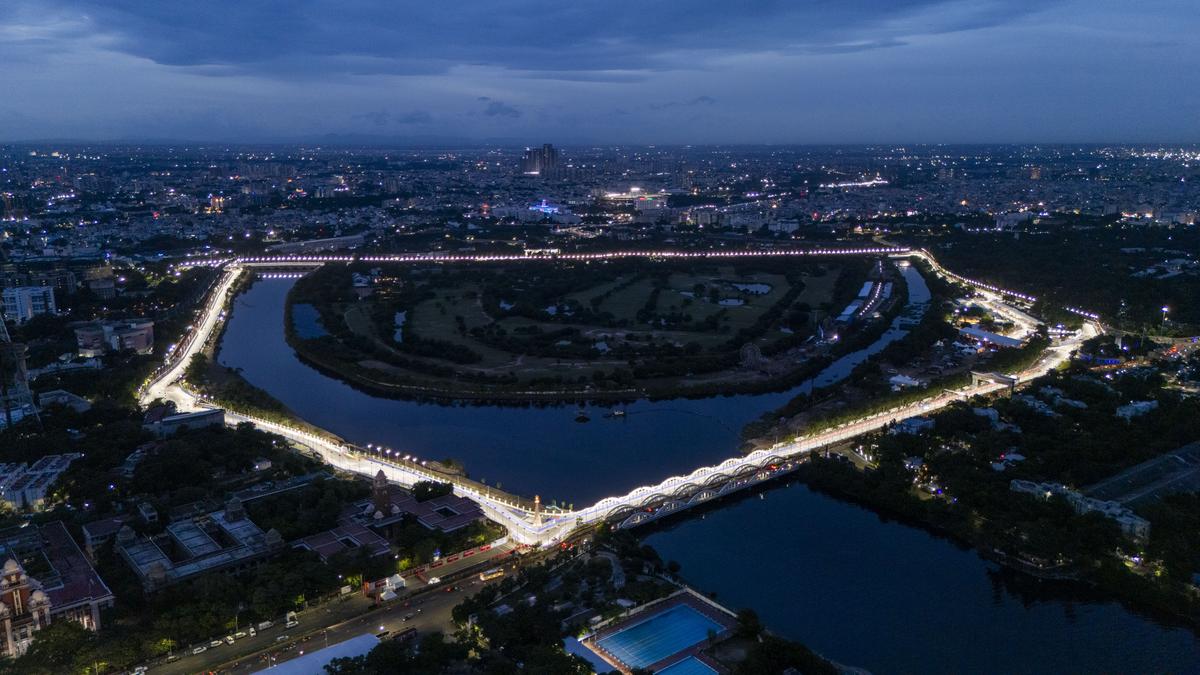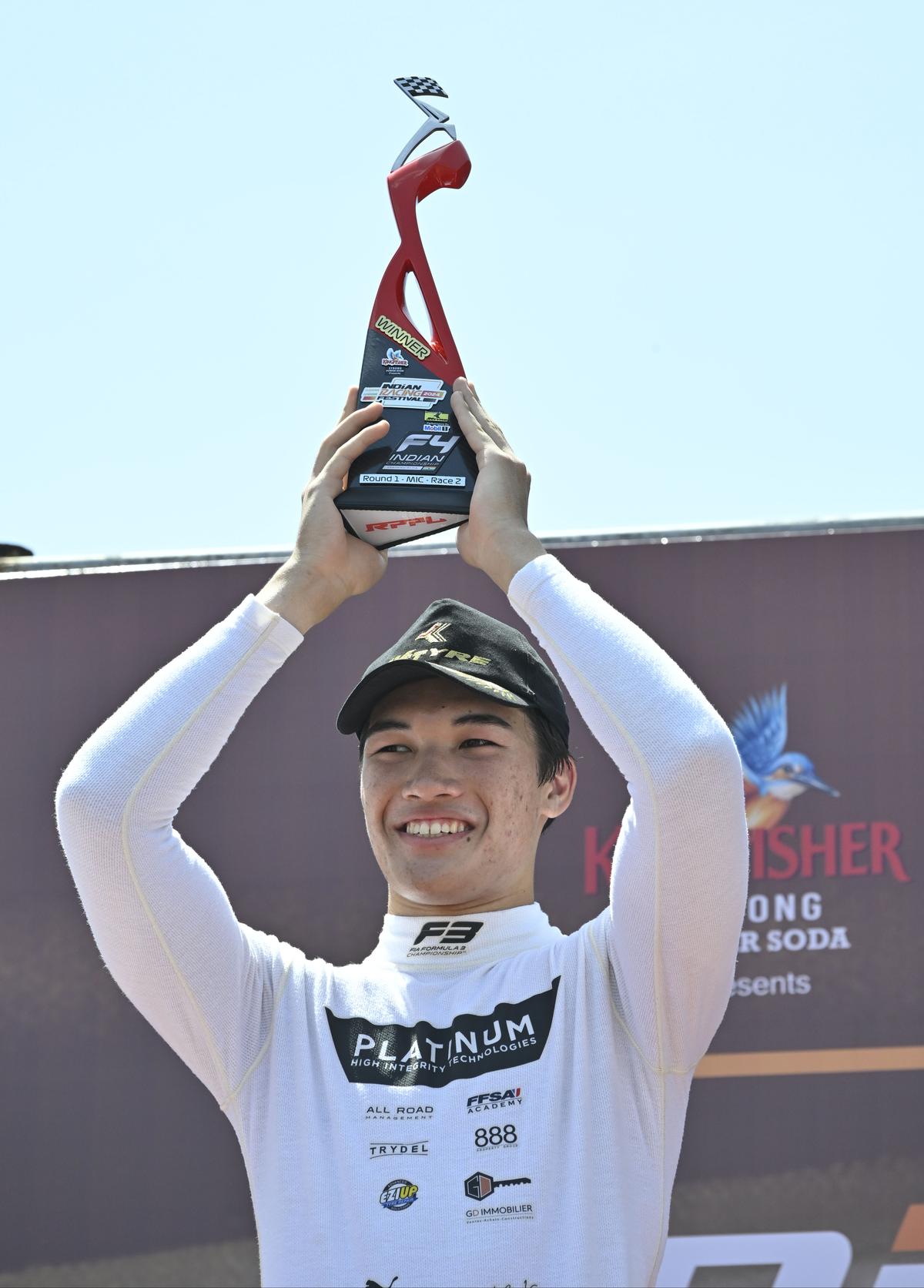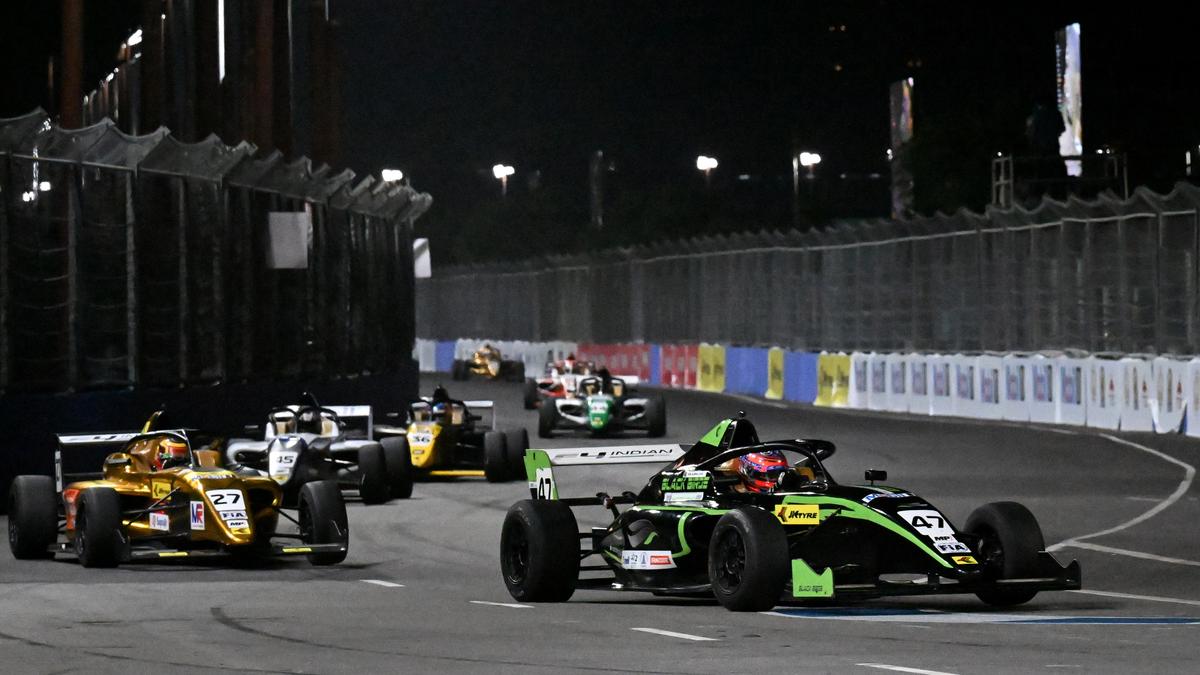Chennai’s night street race a success, but there are lessons to learn
As dusk settled over the city, a 3.5-kilometre stretch around the Island Grounds transformed under the floodlights into the exhilarating Chennai Formula Racing Circuit. This 19-turn track, winding through iconic landmarks like Napier Bridge and Victoria War Memorial, hosted the second round of the Indian Racing Festival (IRF) from August 31 to September 1.
Onlookers who might have otherwise flocked to the nearby Marina Beach on a typical Sunday evening stood and peeked through the hastily erected mesh fences, eager to catch a glimpse of the roaring cars. The engines’ thunderous roar drowned out the usual city traffic as six thrilling races unfolded on the track.
Chennai succeeded in hosting India’s first-ever night street race, which featured three prestigious competitions: the Indian Racing League (IRL), the Formula 4 Indian Championship (F4IC) and JK Formula LGB cars. Originally slated for the previous season, the launch of the track, which was built in accordance with Fédération Internationale de l’Automobile (FIA) standards, was postponed due to a cyclone that hit the city in December last year.
In July 2024, it was officially confirmed that the circuit would return to the IRF grid. Expectations soared high and questions loomed large as work resumed on piecing together the intricate track.

Dazzling under lights : An aerial view of the illuminated Chennai Street Circuit during the Formula 4 Street Car Race. The cars raced along some of the city’s major landmarks — Victory War Memorial, Napier Bridge, Swami Sivananda Salai and Anna Salai.
| Photo Credit:
Special Arrangement
Dazzling under lights : An aerial view of the illuminated Chennai Street Circuit during the Formula 4 Street Car Race. The cars raced along some of the city’s major landmarks — Victory War Memorial, Napier Bridge, Swami Sivananda Salai and Anna Salai.
| Photo Credit:
Special Arrangement
From the outset, the project was seen as ambitious, with many raising eyebrows over the hefty budget — exceeding Rs. 40 crores — dedicated to making the event a reality. Add to that the tight deadlines and logistical challenges of hosting a race through the streets of a bustling city, and the task seemed daunting.
Yet, both the government and organisers acted swiftly. Preparations began in earnest, with wire mesh fencing, floodlights, and track walls installed, while tri-colour grandstands were set up and roads were relaid. After eight months of anticipation, the Chennai Formula Racing Circuit was finally ready to prove itself. The question lingered: could it live up to its promise of delivering a challenging spectacle?
An unexpected eight-hour delay on Day 1 threatened to sap the enthusiasm from the event as an unsettling quiet hung over the circuit. Soon, murmurs filled the air, hinting at session delays due to ‘technical issues’.
It was later revealed that the FIA had withheld its final approval after identifying concerns with a few corners — particularly Turns 10 and 19. Although a three-year licence had been granted just two days earlier, these last-minute adjustments were required before the circuit could receive the green light.
To address concerns, the barriers at Turn 19 were modified to reduce car speed, while the hairpin at Turn 10, which had a larger run-off area, needed adjustments to ensure smoother ambulance movement, as it was near the Government Hospital.
While these changes were implemented at full speed, those outside the track were left in the dark about the developments. Confusion spread among media, police officers and fans, all frustrated by the lack of communication and the absence of on-track action.
Even as drivers boarded the bus outside, some mechanics remained in the pits, diligently working on their cars. Despite the delays, the hope of racing never faded.

Hugh Barter: “I love the track. It’s really cool. It’s got a mixture of high, low, and medium speed. Driving at such a tight section at the back where it’s so fast is really exhilarating.”
| Photo Credit:
M Vedhan
Hugh Barter: “I love the track. It’s really cool. It’s got a mixture of high, low, and medium speed. Driving at such a tight section at the back where it’s so fast is really exhilarating.”
| Photo Credit:
M Vedhan
Finally, after what felt like an eternity, the cars were flagged off, giving drivers their first taste of the track. The floodlit streets shimmered, almost making the long wait worth it. A little after 9 p.m., the FLGB cars set the first lap times around Chennai’s illuminated streets, followed by the IRL and F4 cars.
With only a practice session completed for each competition, organisers faced a challenging task on Day 2, aiming to squeeze in practice, qualifying, races, and stunt shows.
Sunday dawned bright with excitement in the air as the FLGB cars roared to life again — though an hour later than scheduled, reportedly due to a delayed track inspection and safety simulations.
The drivers soon began pumping impressive lap times on the bumpy, tight, yet fast streets, picking up speed with each lap. Although the sky was intermittently overcast, it eventually cleared, revealing stunning visuals of race cars blazing under the bright sunlight.
By the time the stands filled with spectators, qualifying was complete, the starting grids were set, and the stage was ready for serious racing. Late in the afternoon, the most anticipated moment of the weekend arrived — the FLGB cars saw the lights go out and set off on the first official lap, followed by races from the IRL and F4 categories.
The narrow streets saw fierce on-track battles and daring overtakes, going against the norm of limited overtaking on such circuits. Hugh Barter’s performance in the second F4 race was a prime example, as he surged past more than 10 cars to finish fifth after starting from the back of the field.
Despite the packed schedule, the event ran smoothly, with all six races completed without major issues. With the track licensed for the next two years, there’s hope for an encore — this time, armed with lessons learnt from the inaugural race.



